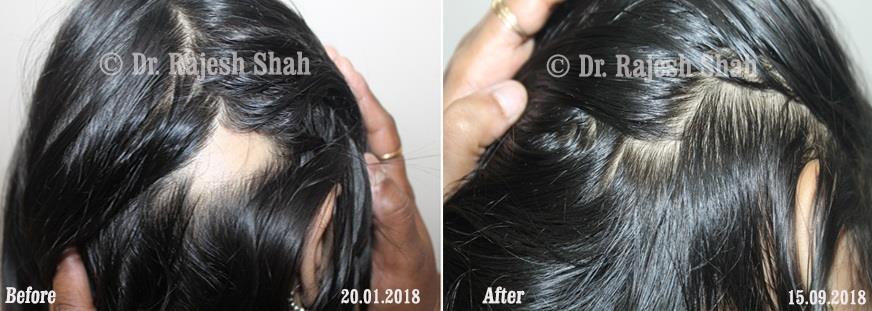A 7-years-old girl, Ms. P.K.L. (PIN: 35320) consulted Chembur branch of Life Force on 20th January 2018 for her complaints of alopecia areata. She was suffering from alopecia areata for the last one year. Her first patch developed one year back in the occipital region. The later one had developed on the frontal region with a severe hair fall in that particular area. Both the patches were mild to moderate in size. She had taken allopathic treatment in the past but could not continue due to its severe side-effects. Besides this complaint, she had adenoids. She had a severe nose block and had to breathe through the mouth.
The patient was on a mixed diet. She liked spicy food, fish, and meat. She didn’t like bitter food. Her thirst was quite less. She was intolerant to the extremes of temperature. Her bowel movements, urination, and sleep were normal.
She was studying in grade II. Her father was an engineer, and her mother was a homemaker. Her younger brother was 2.5 years old. She was timid and was very good academically. Her hobbies were drawing, painting, dancing, and singing. She was an irritable person, and a lot of sibling rivalry was present. Her mother was suffering from an underactive thyroid and alopecia areata.
Dr. Shah studied her case in detail and prescribed her with Phosphorous 30 and his research-based molecules for alopecia areata. On 17th March 2018, when she gave her first follow-up, there was a very good improvement observed in her patches. There was a little hair regrowth observed in her patch. This time Dr. Shah revised her case and prescribed her with some new set of medicines.
A few months later, when she gave her follow-up on 8th May 2018, there was 30% to 40% improvement observed in her patch. No new patch had developed on her scalp. Hair regrowth was observed in the area. Her relief from adenoids had also shown a remarkable improvement.
Later, when she gave her follow-up on 18th August 2018, her alopecia areata complaint was cured completely. She had completely recovered from her alopecia patch. No new patch had developed during the period of treatment. Her relief from adenoids had also shown a remarkable improvement.
Her recovery from all her complaints was better, and she is still continuing the medicines for a better recovery.

Conclusion:
This case illustrates that homeopathic medicines are deep-acting and aim at curing auto-immune conditions, such as alopecia areata, effectively with no side-effects and in a short period of time.
Written by Dr. Amrita K, Associate doctor to Dr. Rajesh Shah